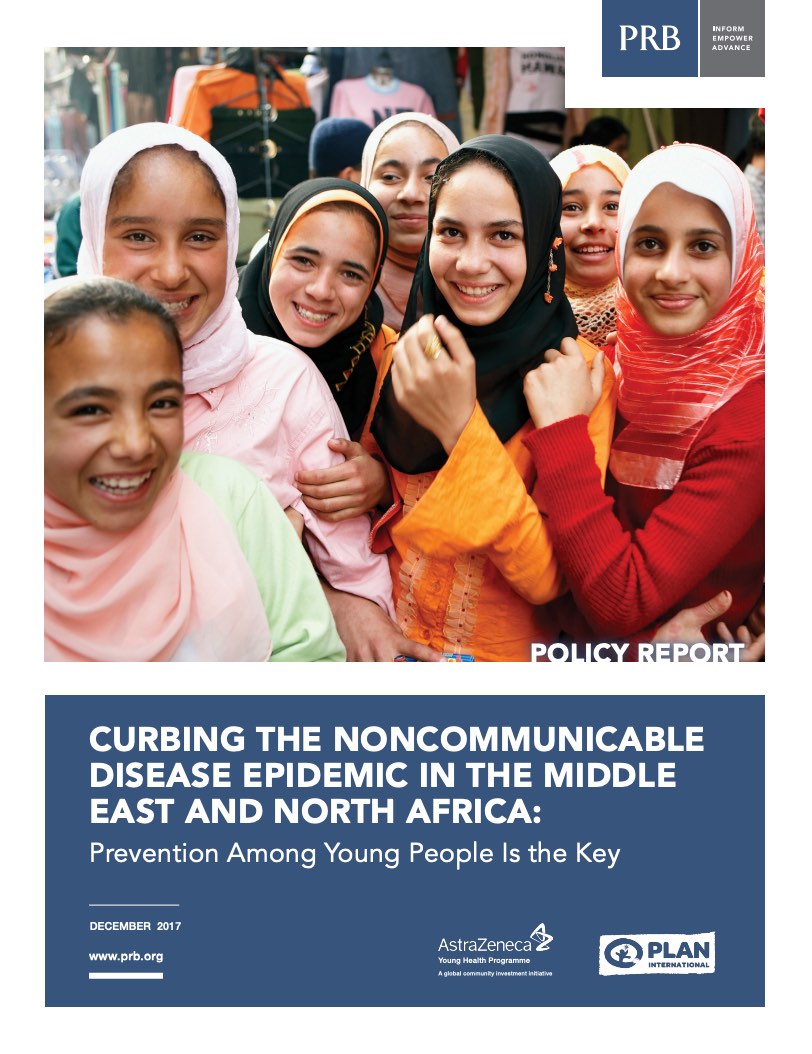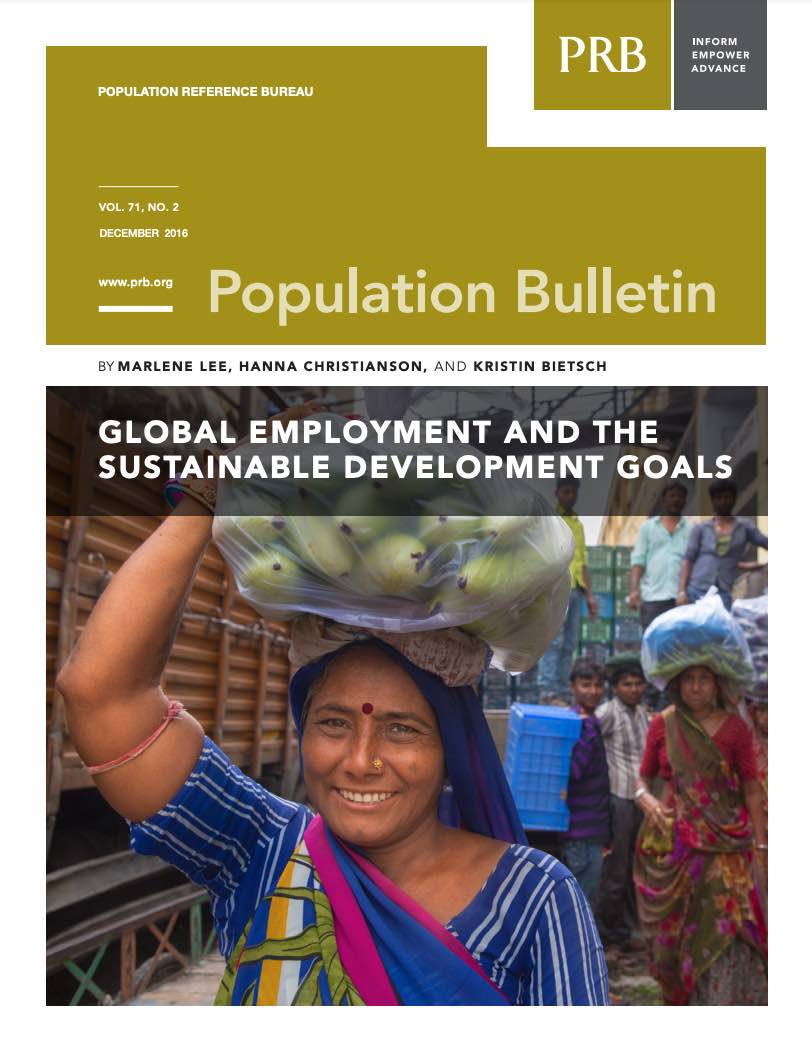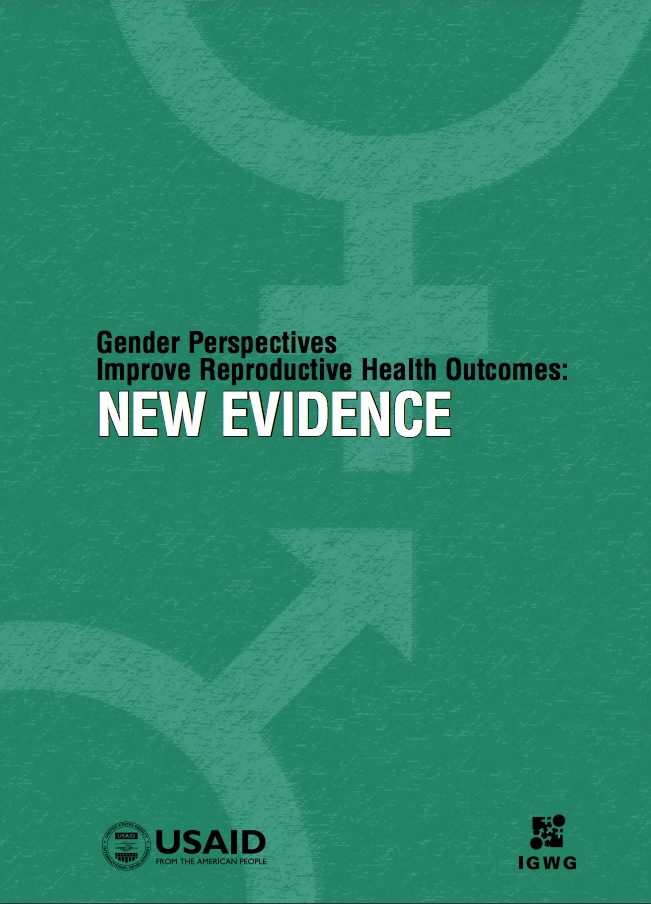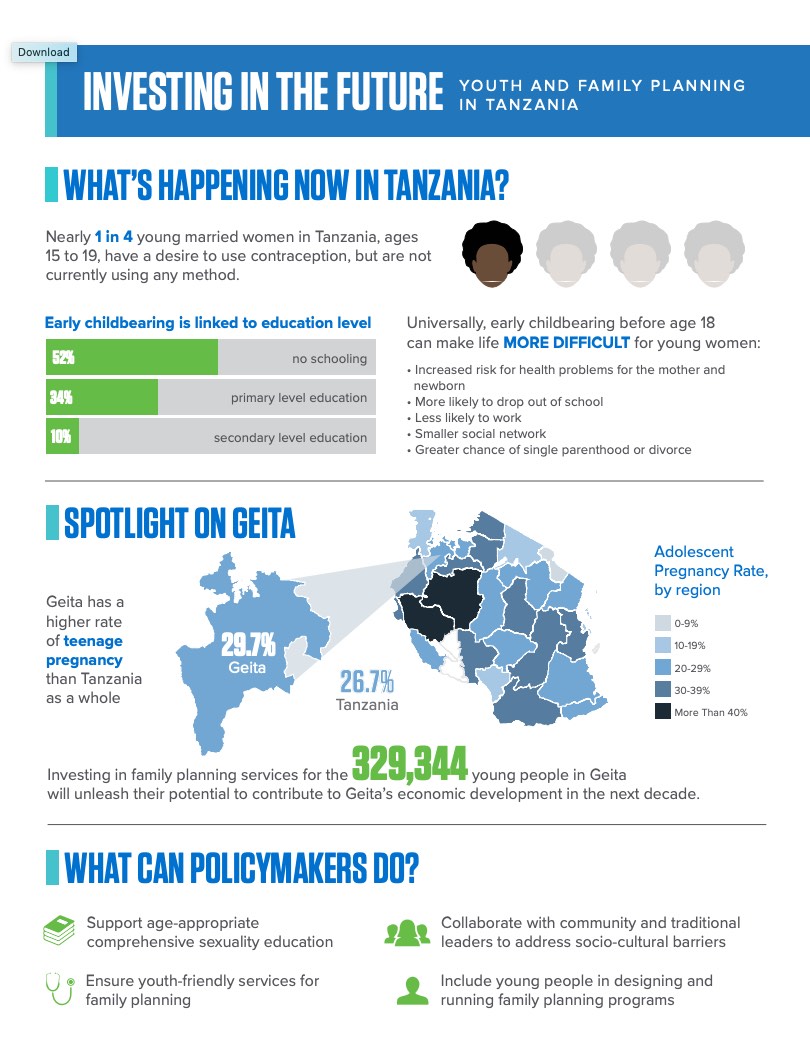Should We Despair Over the Demographic Divide?
We must hold two things to be true: Populations are rapidly shrinking and rapidly booming—just in different places.

We must hold two things to be true: Populations are rapidly shrinking and rapidly booming—just in different places.
(2009) The United States has higher fertility rates among teenage girls compared with other developed countries of the world.1 For example, girls ages 15 to 19 have fertility rates more than five times higher than their counterparts in developed countries such as France, Italy, Japan, Slovenia, and Switzerland.

Project: Combatting Noncommunicable Disease Risk Factors in Youth
Preventing risk behaviors among young people is key to curbing the noncommunicable disease (NCD) epidemic in the Middle East and North Africa (MENA), according to a new set of PRB publications.

The United Nations Sustainable Development Goal 8 calls for full and productive employment and decent work for all. In our latest Population Bulletin, we explain how demographic trends will have a bearing on whether and how rapidly this and other SDG goals are achieved.

While many economic measures are looking up, key health and education indicators are backsliding, according to the 2025 KIDS COUNT Data Book

Which generation had the toughest time as young adults?

(2010) In 2004, the Interagency Gender Working Group, funded by the United States Agency for International Development, published The "So What?" Report: A Look at Whether Integrating a Gender Focus into Programs Makes a Difference to Outcomes. The 2004 report presented evidence of the value of integrating gender into programs for promoting positive reproductive health and gender outcomes.

(2003) Coastal regions, areas that are home to a large and growing proportion of the world's population, are undergoing environmental decline.

Project: Empowering Evidence-Driven Advocacy
Nearly 1 in 4 young married women in Tanzania, ages 15 to 19, have a desire to use contraception, but are not currently using any method.